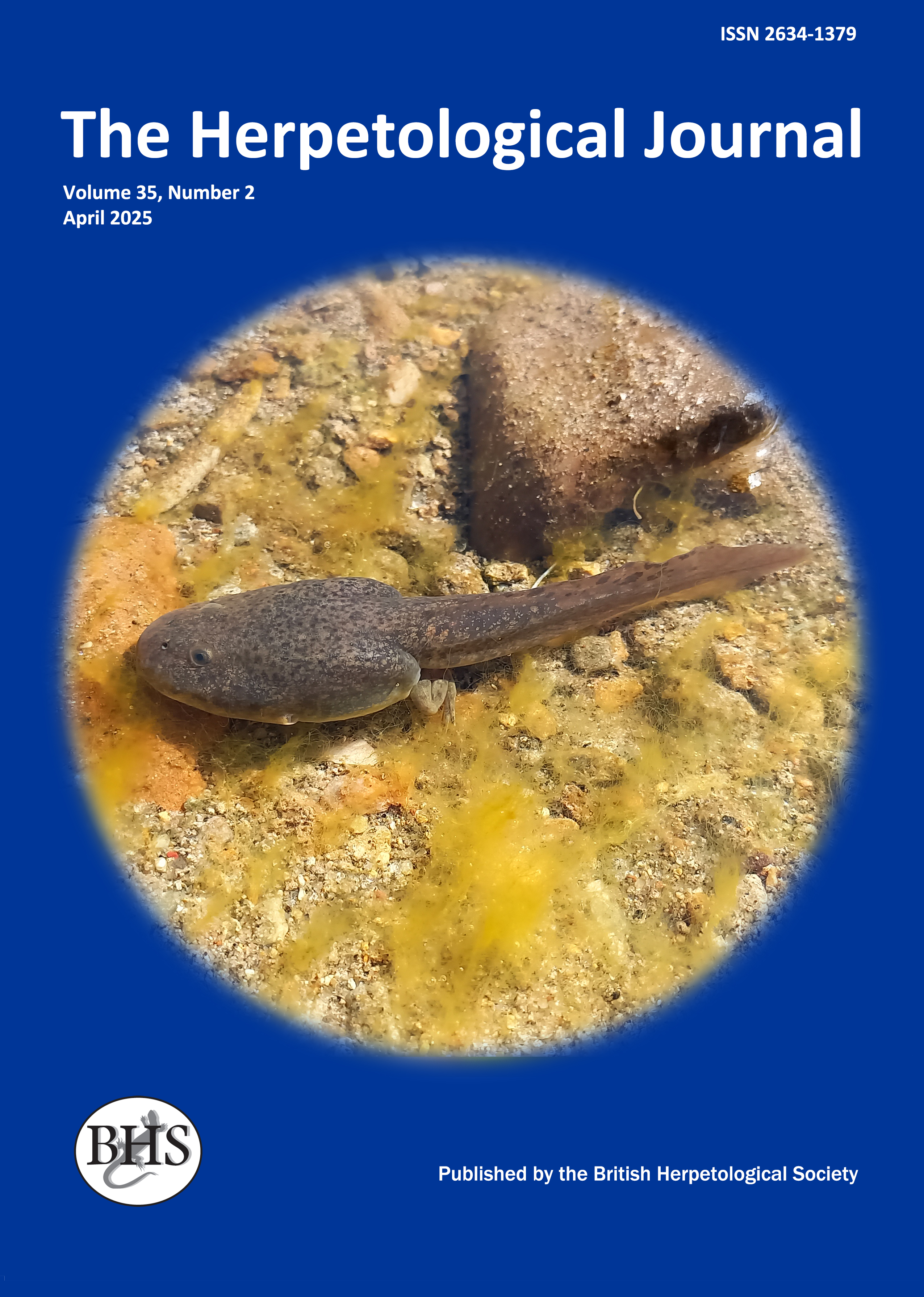
The Herpetological Journal
The Herpetological Journal is the Society's prestigious quarterly scientific journal. Articles are listed in Biological Abstracts, Current Awareness in Biological Sciences,Current Contents, Science Citation Index, and Zoological Record.
ISSN 0268-0130
2021 Impact Factor from Clarivate for the Herpetological Journal is 1.194, an increase of 0.332 from 2020.
pdf 01. Genetic study of an isolated population of adders Vipera berus founded by historic translocation: implications for conservation
776 downloads
Open Access
DOI: https://doi.org/10.33256/34.4.197210
pp. 197-210
AUTHORS: Sarah Ball, Silviu Petrovan, Esme Ashe-Jepson, Claire Dobson, Becki Lawson, Liz Morrison & Trent Garner
ABSTRACT: Adder Vipera berus populations in Great Britain have undergone substantial declines in recent decades. Isolation due to habitat fragmentation particularly threatens the demographic and genetic health of small populations. Despite the potential benefit of population supplementation in the conservation management of affected populations, there are currently no consensus guidelines for conservation-motivated translocations of this species. Translocations of adders for ecological mitigation of land development are more frequently undertaken, although these are typically poorly documented and insufficiently monitored, representing a wasted opportunity for strategic learning and improvements. We studied an isolated adder population on a protected site in eastern England, founded in 1999 by the translocation of adders from a development site. With known numbers, age and sex of released individuals, this represented an opportunity to improve our understanding of the genetic outcome of a newly created population. Although apparently thriving despite a low founder number, the finding in 2015 of a stillborn clutch of adders raised the possibility of inbreeding in the population. We sampled adders from the translocated population in 2017, and two individuals from the donor site in 2018. Although we found no increase in homozygosity, relatedness and maximum likelihood sibship analysis revealed high levels of consanguinity, especially within the subgroup of adults. Demographic modelling with Approximate Bayesian Computation supported the known origin of the population, but also a subsequent, undocumented adder release to the site, accounting for the observed healthy proportion of young adders with lower levels of consanguinity. Despite the protected habitat site, the population remains isolated, and thus demographically and genetically vulnerable. We highlight the importance of careful post-translocation monitoring including targeted genetic analyses. Strategic data gathering coupled with careful management of translocations, whether for ecological mitigation or conservation rescue, could support significant improvements to the conservation management of this species, including reintroduction initiatives.
Keywords: relatedness, inbreeding, stillbirth, foundation bottleneck, population supplementation

